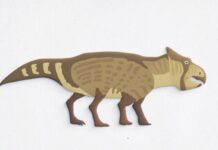 EXPERTS at the Royal BC Museum in Victoria have discovered a new species of marine glass sponge, an achievement confirmed with the publication of a new academic paper this Tuesday, February 24.
EXPERTS at the Royal BC Museum in Victoria have discovered a new species of marine glass sponge, an achievement confirmed with the publication of a new academic paper this Tuesday, February 24.
The key to making this discovery is Dr Henry Reiswig, one of the world’s leading experts in glass sponges, and a Research Associate at the Royal BC Museum. In a distinguished career, Reiswig has made over 100 different taxonomic discoveries in his field.
Reiswig, who retired from McGill University’s biology department in 2001, is still active in research and publishes up to five or six new academic papers each year.
Dr Melissa Frey, Curator of Invertebrates at the Royal BC Museum, has been studying glass sponges under the tutelage of Reiswig, and knew who to turn to when she realized she had something special with this new sample.
“I gave the specimen to Henry, and after closely examining the sponge’s spicules he confirmed it new to science,” Frey said. “It wasn’t anything I’d ever seen before.”
The new species of sponge was collected on Bowie Seamount, a submarine volcano 180 kilometres west of Haida Gwaii, by Archipelago Marine Research as a part of a Fisheries and Oceans Canada project in the summer of 2014.
Glass sponges are unique in that they have a silica-based skeletal system. Off the Northeast Pacific coast there are three species of glass sponge which form reefs, the only place in the world where this happens. These unique reefs provide important habitats for fishes and other invertebrates.
“They’re very strange organisms because they’re syncytial, meaning they’re one cell,” Reiswig said. “It’s all one cytoplasmic connect, like a fungus. It’s a different kind of successful form of being an animal.”
Reiswig named the new species after a friend and colleague, Dustin Chivers, who saved his life in 1962 while diving off the central Californian coast. Reiswig, about 20 years old at the time, blacked out while diving, and his friend carried him to the surface and got him to a hospital in time to save his life.
“Everything I’ve produced so far has been the result of this guy saving my life, as far as I’m concerned,” Reiswig said about the now-deceased Chivers. “So I thought I’d name it after him.”
And so now Doconesthes dustinchiversi is a properly described species, and the type specimen will live at the Royal BC Museum, allowing access to experts from around the world.












